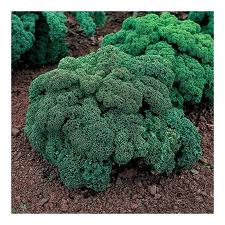
Someone on our Facebook page recently asked how you cook kale. And she asked at a perfect time, since we've been getting it almost weekly at Chow Locally, and I've been the one who's been curating recipes and techniques to keep our customers excited!
First of all, a bit about kale. It is actually a type of cabbage that never gets around to forming into a head. In this photo you see curly kale, which is one of the more popular kinds, what you often see used to make kale chips. It comes in a variety of colors and leaf shapes, all of which can be enjoyed!
Here are some of the great things kale can do for you.
1. It can lower your cholesterol.
2. It can lower your risk of cancer.
3. It is a great food for detoxification.
4. It is extremely high in antioxidants — over 45 have already been identified.
5. One cup cooked kale has 1328% of your RDA's for vitamin K, 354% for vitamin A, and 89% of vitamin C. And only 36 calories.
Now that is what I call nutrient dense!

For the longest time, I thought kale was just the pretty gray-green curly stuff you used to decorate party platters, but didn't really eat. Then antioxidants were discovered, and kale topped the charts, and people started deciding, maybe they should figure out how to eat it. It can be a bit of a challenge because it is bitter. Unless you are Kitty, who loves raw kale (this is white peacock kale here), it's best to know a few cooking techniques!
Here are some of the easiest ways to enjoy kale.
1. Juice it. There are a bazillion recipes for juicing kale on the Internet. I am linking you to just one here.
2. Massage it and eat it raw. Interestingly, kale's bitter flavor dials back a bit if you chop it, and massage it with some type of oil until the color pops green. Here is a great blog post with three massaged kale salad recipes, along with more ideas (colcannon, which is mashed potatoes and kale, is a recipe I sent to our customers with this week's box.)
3. Saute it. Super easy, as you can see in this recipe!
4. Make pesto with it. One week we got gorgeous purple peacock kale in our boxes, and it intimidated some of our customers. It's the same vegetable, just a different color, and to demonstrate, I made a purple pesto. You can make this exact same pesto with any kind of kale…curly, dinosaur, peacock, Toscano…because it's still kale!

5. Steam/wilt it. This is one of my all time favorite kale recipes, by Rachel Ray, steamed kale with portobello mushrooms. I often make this dinner!
6. Kale chips. This is all the rage right now. I'm giving you the recipe and I encourage you to try this with any sturdy greens you might have available — kohlrabi and beet have worked very well in my kitchen.
7. Braise it. Braising is a way to slow cook and infuse the flavor of a wine, vinegar, alcohol, broth, or other liquid. I just found this great salsa-braised kale recipe while surfing for this post…it is on my list to try!
I hope this gets you started! Let us know how you end up cooking yours!


















